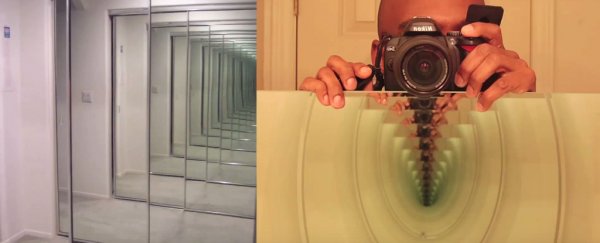
You probably haven't spent too much time thinking about that mirror you look in every day. It's there, it does its job, and… hang on, what actual colour is it?? If you said silver, you're wrong, and if you said no colour at all, you're also wrong. And, see, now that we've mentioned it, you kind of want to know the answer, right? As this classic episode of Vsauce explains, it's a little more complicated than you might think.
To start with, there's the obvious answer: a mirror is whatever colour you point it at. Haha, good one, you got us there.
But by definition, an object is whatever colour it doesn't absorb. So Post-it notes are yellow because they absorb all the other wavelengths of light, and scatter the yellow ones back into your eye.
A mirror reflects all colours pretty much perfectly, so technically, shouldn't it be white? Well, sort of, except a mirror doesn't reflect colours the same way that pigment does, Vsauce explains.
Those Post-it notes reflect yellow light back in all directions at once, no matter which direction it came from. But a mirror reflects light through something called specular reflection, which means it reflects light back depending on how it came in.
As Phil Plait explained all the way back in 1996 over on Bad Astronomy:
"A white shirt just reflects light back everywhere in all directions. Even if red and blue light hit the shirt coming from the same direction, they may get scattered in different directions. A mirror, on the other hand, reflects the blue and red light in the same direction, and so the mirror actually builds an image of the source of the light."
So for that reason, we call mirrors a kind of 'smart' white. Of course, that's not the whole story, because, this is science we're talking about.
That 'smart' white refers to a totally perfect mirror, which doesn't really exist in the real world, and certainly not on your bedroom wall. In fact, Vsauce reveals that mirrors actually do reflect one surprisingly wavelength of light slightly better than others - and that's light in the 510 nanometre range, which we perceive as green.
So, in reality, mirrors are actually a very tiny big green. And you've probably actually seen that yourself without realising it, when looking in a mirror tunnel.
I'll let Vsauce show you what that looks like in the video above, because it's pretty trippy. And if that isn't enough exciting, mind-blowing mirror science for you in one day, try to wrap your head around why mirrors flip things horizontally but not vertically. Yeah… whoa.

